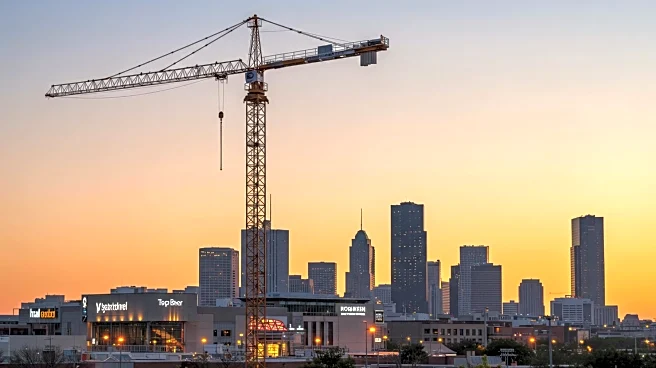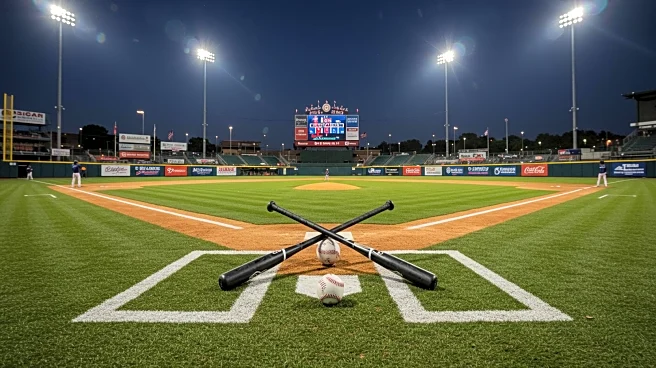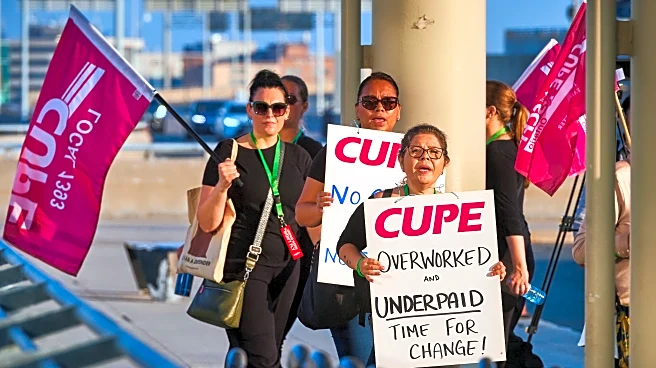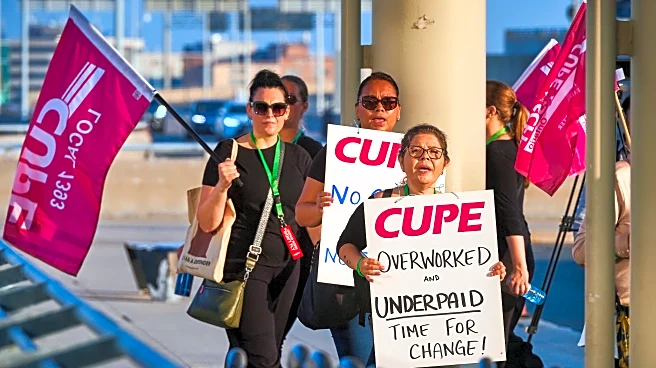What's Happening?
The U.S. hotel industry experienced a decline in revenue per available room (RevPAR) for the week ending August 9, 2025, with a 1.6% drop attributed to decreased occupancy and average daily rate (ADR). This decline was influenced by ongoing negative impacts from major markets like Houston and Las Vegas, which have been struggling with difficult comparisons due to last year's storms. Additionally, the aftermath of Hurricane Debby, which affected several Southeast U.S. markets last year, has led to a return to normal demand levels, resulting in double-digit RevPAR growth in those areas. Despite these gains, the overall performance of the Top 25 Markets was down, with a 2.5% decrease, nearly double the national average. San Francisco emerged as a bright spot, showing strong RevPAR growth due to events like the World Transplant Congress.
Why It's Important?
The decline in RevPAR highlights ongoing challenges in the U.S. hotel industry, particularly in major markets affected by past storms and economic pressures. The decrease in occupancy and ADR suggests that hotels are struggling to maintain profitability amid rising inflation and operational costs. This situation could lead to declining profit margins, impacting hotel operators and investors. The performance of the Top 25 Markets is crucial as they represent a significant portion of the industry, and their struggles could signal broader economic challenges. The positive performance in markets like San Francisco offers some hope, but overall, the industry faces a tough road ahead.
What's Next?
As summer concludes, the U.S. hotel industry will continue to grapple with challenging year-over-year storm comparisons and economic pressures. The upcoming fall conference and meeting season will be closely watched, as it could provide a boost to group demand, which has been declining. Globally, RevPAR growth remains positive, excluding France, which faced a significant decline due to Olympic comparisons. The industry will need to navigate these challenges while adapting to changing market conditions and consumer behaviors.
Beyond the Headlines
The ongoing decline in RevPAR and occupancy rates raises concerns about the long-term sustainability of the U.S. hotel industry. The impact of inflation and rising operational costs could lead to shifts in pricing strategies and investment decisions. Additionally, the industry's ability to recover from storm impacts and economic pressures will be crucial in determining its future trajectory. The focus on group demand and transient demand dynamics will play a key role in shaping the industry's recovery efforts.












